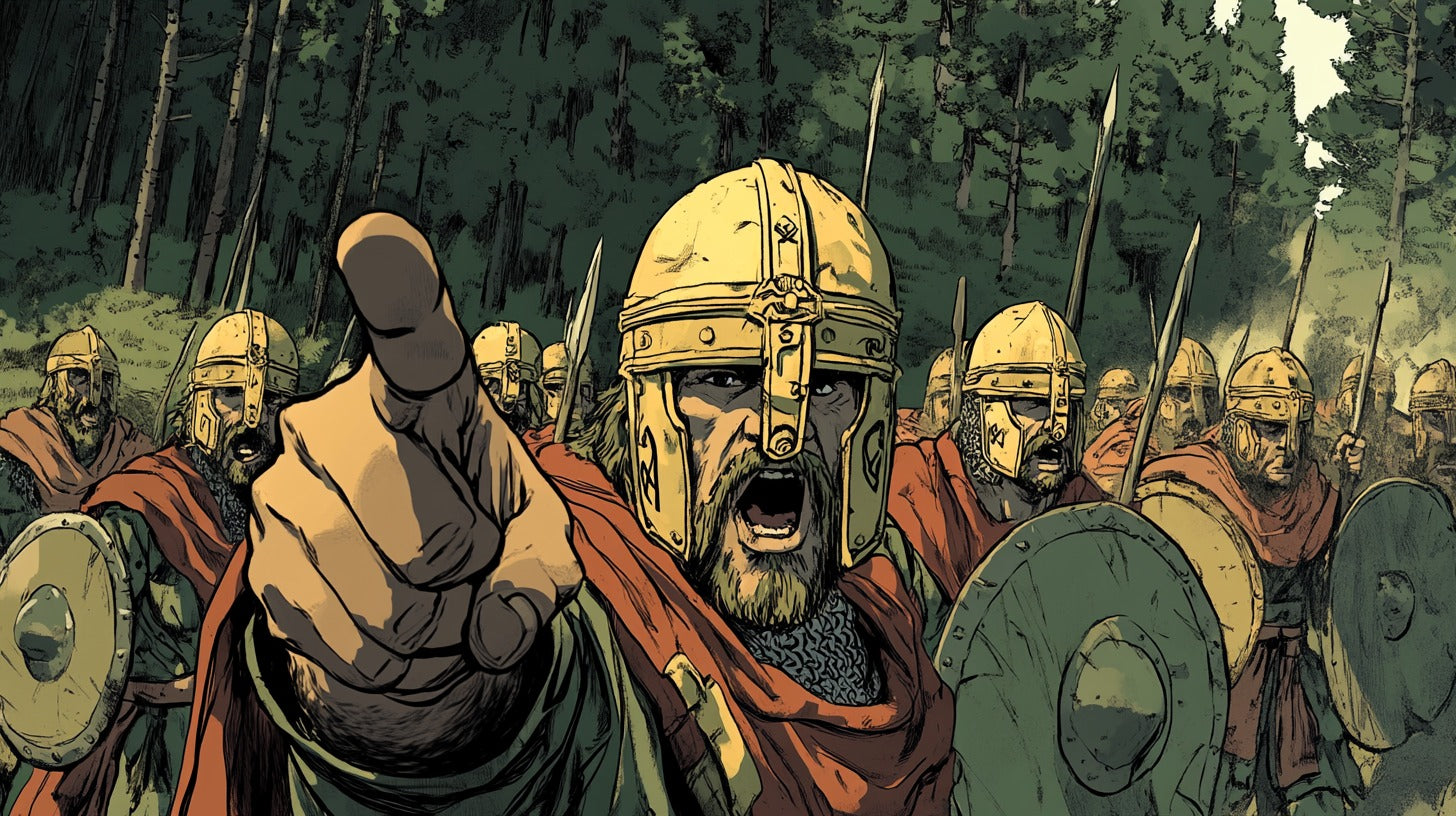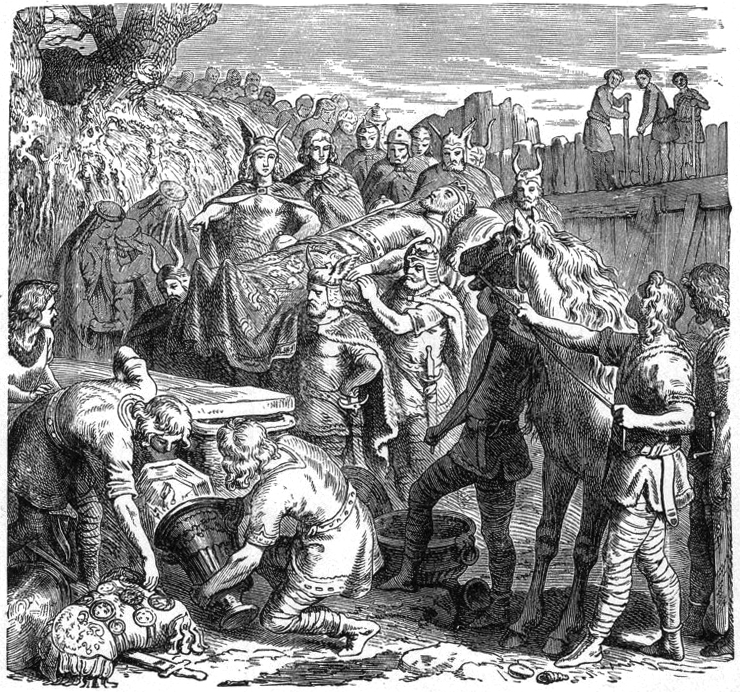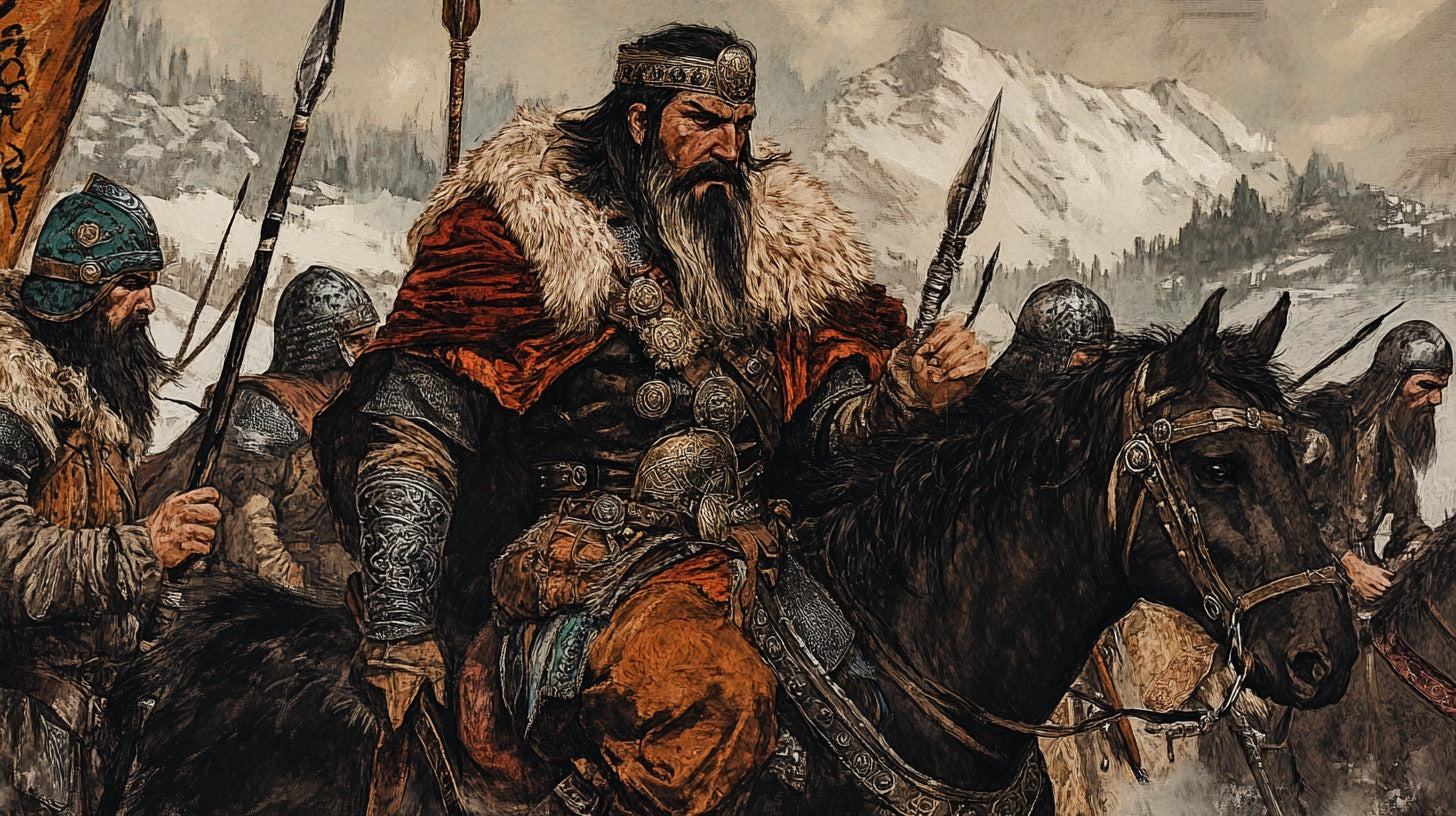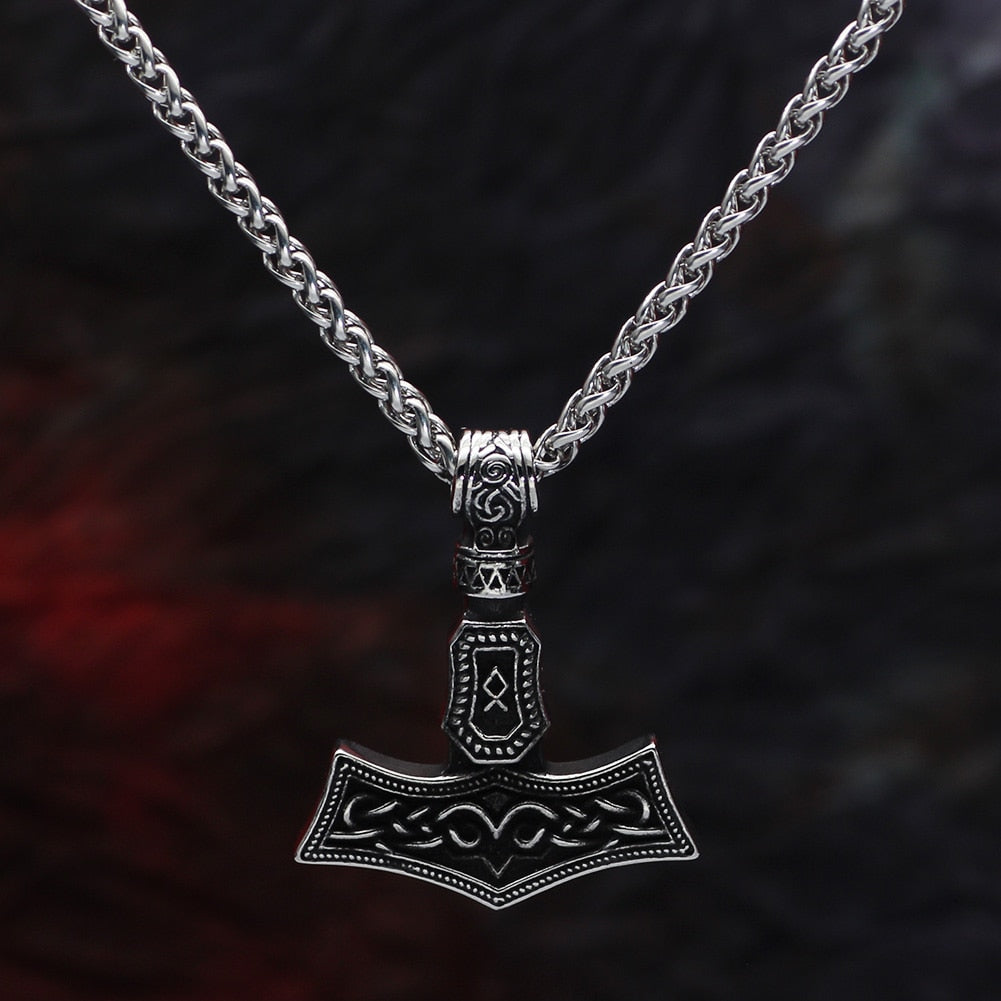
King Alaric I: Visigothic Leader and Rome's Conqueror
Born into turbulent times on the island of Peuce in the Danube Delta around 370 CE, Alaric I emerged as one of the most significant figures in late Roman history. His leadership of the Visigoths and eventual sack of Rome in 410 CE marked a pivotal moment in the decline of the Western Roman Empire, forever changing the course of European history.
Origins, Rise to Power, Military Career & Ascension to Visigothic Leadership

Old Norse Amulet Pendant with Elder Futhark Runes – Jelling & Mammen Style
Alaric was born into the noble Balti dynasty of the Visigoths, though his exact parentage remains uncertain in historical records. His early years coincided with the period when the Visigoths were settled as foederati (allied peoples) within the Roman Empire, following the Treaty of 382 CE with Emperor Theodosius I. During his youth, Alaric received military training and served in the Roman army under Theodosius, participating in several campaigns including the Battle of the Frigidus in 394 CE.
In 395 CE, following the death of Theodosius I, Alaric was elected as the leader of the Visigoths. This elevation came at a crucial moment when the Roman Empire was divided between Theodosius's sons: Arcadius in the East and Honorius in the West. The political instability created by this division provided Alaric with opportunities to strengthen his position and advance Visigothic interests.
Military Campaigns, Conquests, Early Raids into Eastern Roman Territory

A 20th-century depiction of Alaric parading through Athens after conquering the city in 395 by Allan Stewart
Initially, Alaric directed his military activities toward the Eastern Roman Empire. Between 395 and 397 CE, he led raids through Thrace, Macedonia, and Greece, demonstrating his tactical prowess and building his reputation as a formidable military leader. These campaigns also revealed his political acumen, as he alternated between warfare and negotiations with Constantinople.
First Italian Campaign (401-402)
Alaric's first major invasion of Italy began in 401 CE. He led his forces across the Julian Alps, threatening Milan, where the Western Roman Emperor Honorius had his court. This campaign culminated in the Battle of Pollentia in 402 CE, where Roman general Stilicho achieved a tactical victory but failed to decisively defeat the Visigothic army. The subsequent Battle of Verona resulted in a similar outcome, leading to negotiations that temporarily halted Alaric's advance.
Second Italian Campaign (408-410)
The execution of Stilicho in 408 CE marked a turning point in Alaric's fortunes. With Rome's most capable general eliminated, Alaric launched a new campaign into Italy. He employed a combination of military pressure and diplomatic negotiations, demanding territory for settlement and payment for his forces. When these negotiations failed, he initiated a series of sieges against Rome itself.
The Sack of Rome: Siege Operations, Impact and Historical Significance

S925 Adjustable Birka Viking Arm Ring
The culmination of Alaric's campaigns came with the siege and eventual sack of Rome in 410 CE. After three separate sieges, his forces entered the city on August 24, allegedly through the Salarian Gate, which was opened by sympathetic slaves. The three-day sack that followed marked the first time in almost 800 years that Rome had fallen to a foreign enemy.
While historical accounts indicate that Alaric's forces showed relative restraint during the sack, sparing churches and religious buildings, the psychological impact of Rome's fall reverberated throughout the empire and beyond. Contemporary writers like Saint Jerome expressed shock and dismay, viewing the event as a turning point in Roman history.
Death and Legacy: Final Days and Burial, Historical Impact

An illustration depicting the legendary burial of Alaric I in the bed of the Busento River. (Photo: Heinrich Leutemann)
Shortly after the sack of Rome, Alaric led his forces south, intending to secure grain supplies from Sicily and possibly expand into Africa. However, he fell ill and died near Cosenza in late 410 CE. According to historical accounts, his followers buried him beneath the riverbed of the Busento River, along with significant treasures, diverting the water flow temporarily to create his grave.
Alaric's legacy extends far beyond his military achievements. His successful challenges to Roman power demonstrated the empire's vulnerability and set precedents for future Germanic leaders. His ability to operate both as a Roman military commander and as an independent Germanic leader illustrated the complex relationship between Rome and its former allies during the migration period.

History of the Goths - Herwig Wolfram
Frequently Asked Questions (FAQs)
1. When did Alaric I sack Rome?
Alaric's forces sacked Rome on August 24, 410 CE, following three separate sieges of the city.
2. What was Alaric's ethnic background?
Alaric was a Visigoth from the noble Balti dynasty, born on the island of Peuce in the Danube Delta.
3. How did Alaric die?
He died of illness near Cosenza in late 410 CE, shortly after the sack of Rome.
4. Was Alaric a Roman commander?
Yes, he served in the Roman army under Emperor Theodosius I before becoming the leader of the Visigoths.
5. What was the significance of Alaric's sack of Rome?
It marked the first capture of Rome by a foreign enemy in nearly 800 years and symbolized the declining power of the Western Roman Empire.
References
Heather, Peter. (2005). The Fall of the Roman Empire: A New History of Rome and the Barbarians. Oxford University Press.
Kulikowski, Michael. (2007). Rome's Gothic Wars: From the Third Century to Alaric. Cambridge University Press.
Mitchell, Stephen. (2007). A History of the Later Roman Empire, AD 284-641. Blackwell Publishing.
Burns, Thomas S. (1994). Barbarians Within the Gates of Rome: A Study of Roman Military Policy and the Barbarians. Indiana University Press.
Wolfram, Herwig. (1988). History of the Goths. University of California Press.








